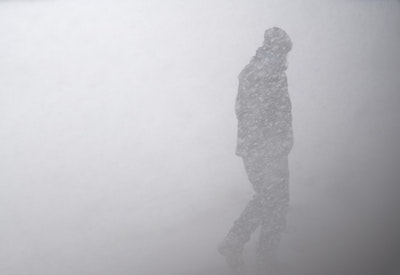Increasingly Severe Weather Causing More Power Outages in BC

Nov 25, 2018
The number of customer outages in BC during major storm events has increased by about 265% from 323,000 customers in 2013 to 1.18 million in 2017, says BC Hydro. In the same time period, the number of storm events BC Hydro has responded to has tripled over the past five years. Included in this are three extreme weather events – a major windstorm in August 2015, wildfires in the summer of 2017, and an ice storm in December 2017.
These findings appear in a new report, Storm warning: The impact BC’s wild weather is having on British Columbians and their power, which found storm and extreme weather events are becoming more frequent and severe as a result of climate change, leading to more damage to BC Hydro’s electrical system and outages for customers.
The impact of storms in B.C. has not gone unnoticed by British Columbians. A recent survey commissioned by BC Hydro found more than 75% of British Columbians agree that storms in the province are getting worse and 20% indicate they have experienced more outages in their neighbourhood in recent years.
In BC, falling trees and branches are the primary cause of power outages. BC has three times more trees per kilometre of line than anywhere else in North America. The combination of trees and adverse weather account for nearly 60% of all outages.
The good news for customers: “Despite the challenges faced by crews during these severe weather events, our customers aren’t waiting longer to have their power restored,” says Chris O’Riley, BC Hydro’s President and Chief Operating Officer. “In fact, about 95% of customers’ power is restored within 24 hours following an extreme event.”
To improve response times, BC Hydro remains focussed on preparing for storm season year-round. BC Hydro is also using its smart meter network along with introducing new technology and processes, including:
• Enhanced prediction logic: using an algorithm and the smart meter network, BC Hydro’s system can confirm an outage and mark its location on a map, which a dispatcher can then analyze and dispatch a crew to investigate and make necessary repairs.
• New mobile dispatch tools: these tools communicate via satellite and help information from the field get to its operations centre faster and more often – providing more timely updates for customers.
• Improved meteorology models: this information provides greater insight into where and when a storm might hit so BC Hydro can ensure crews are ready to respond quickly.
Read the report here
Photo source: Zac Durant on Unsplash










![Guide to the Canadian Electrical Code, Part 1[i], 26th Edition – A Road Map: Section 10 – Grounding and Bonding](https://electricalindustry.ca/wp-content/uploads/2022/11/Guide-CE-Code-2.png)





